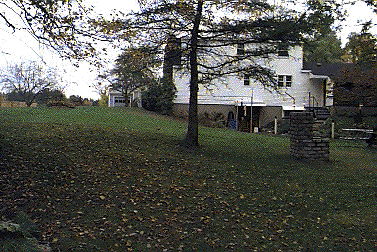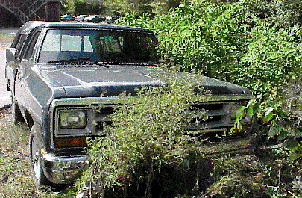According to Jessie Robie an invasive species is “any species of plant found growing outside of its natural area of occurrence. There are several invasive species in our wetlands: the Norway Spruce; bittersweet; grapevines; fruit trees and the common reed, the common reed causing the most trouble.
The question of what to do about the invasion of the common reed, also known as Phragmites australis, is at the moment undecided. Jessie points out several problems in removing them: “it takes years…and doesn’t always work”, “removing [them] would…change the current makeup of our wetland” and if they aren’t completely removed they might “grow back faster and thicker.”
If you are more interested in information on Phragmites australis talk with Jessie Robie or visit the Sanborn web site where more information on her project will be posted.
Information and quotes provided by Jessie Robie’s
article “Invaders in the Wetland”, which can be found at the Sanborn
web site and in the 2nd volume of the Project World newsmagazine
entitled Project World Connection.
3 The Culvert and a Short History of our Wetland
The culvert that you see was built in the 1950’s to control flooding.
 |
To give a history of the Sanborn wetland I must go back several thousand years to the time when glaciers swept across the northern portion of North America. The glaciers not only formed mountains and valleys but they also formed wetlands. A glacier formed the wetland that you are walking through today.
As a glacier was making its journey over the
landscape, it suddenly came to a halt and parked its rear in the area
that you are standing
today. It then melted and the result is our wetland. It’s
as
simple as that.
Now we make a big leap to the 1950’s when the culvert was built and beyond to the 1960’s. In the 1960’s the residents of Cottage Street began cutting down trees in the wetland, which could have possibly been devastating to the Sanborn ecosystem if done incorrectly. I’ll talk about the importance of diversity later on. The school also had the wetland surveyed in the 1960’s and found it to be 180 feet across and 38 feet deep in the middle. Jenn Buteau, a student in Project World, again surveyed the wetland this year.
 |
In 1964 the school added the Science building and the road increasing the size of the high school yet diminishing the size of the wetland. The wetland is still being diminished in size today due to parking.
Information provided by Tom W and his project
entitled “How has the Sanborn Wetland evolved?”
Pictures by Dan M, Tom W, and Jessie R